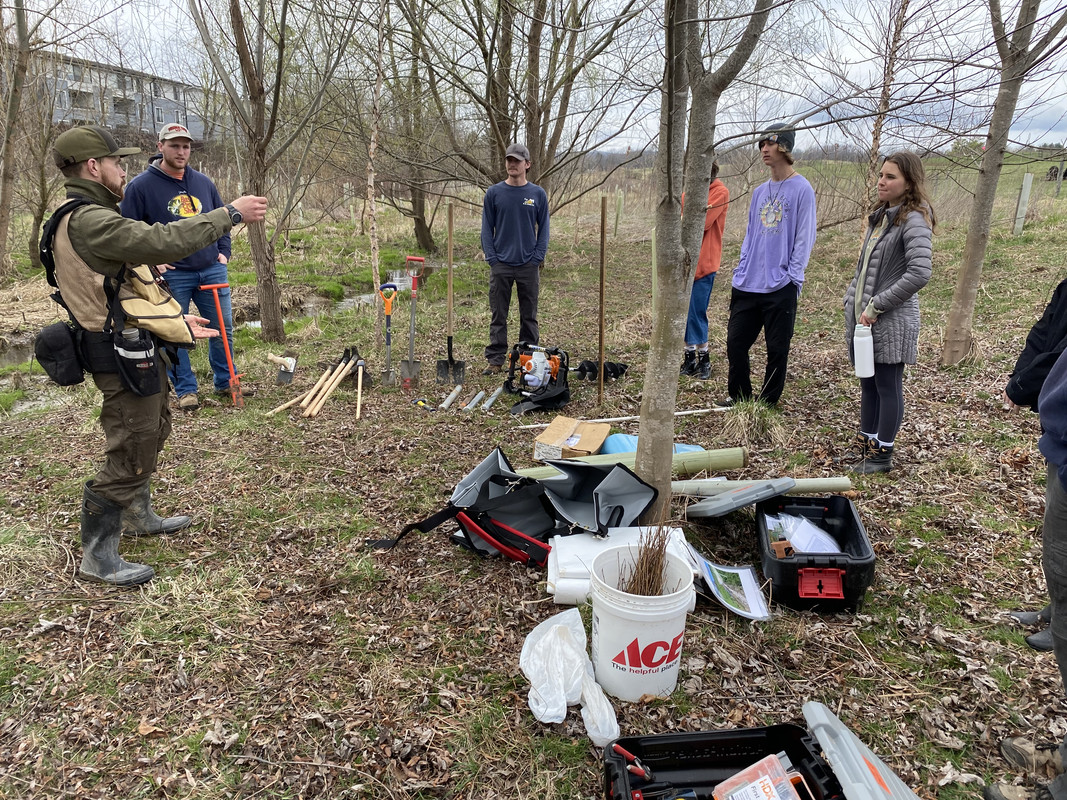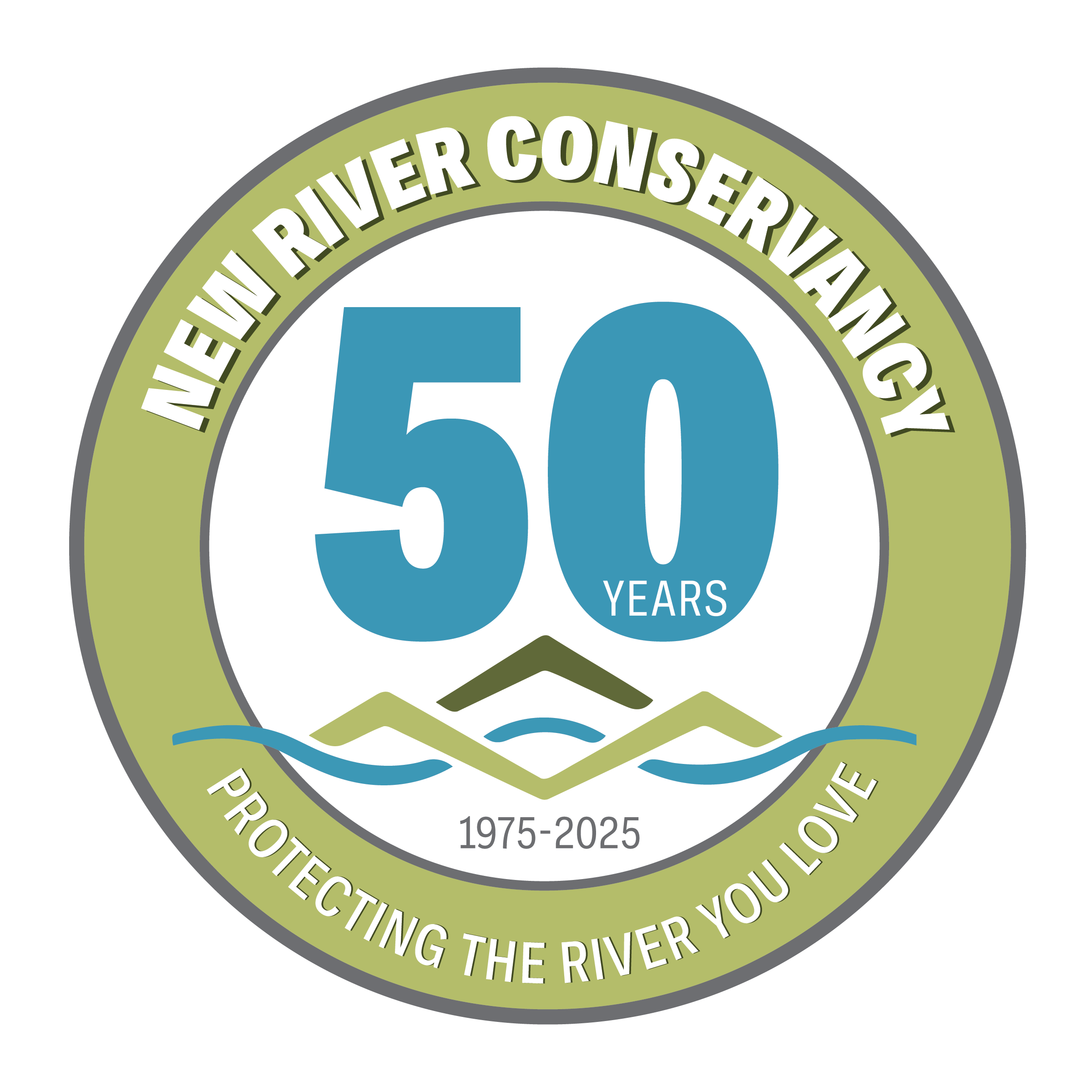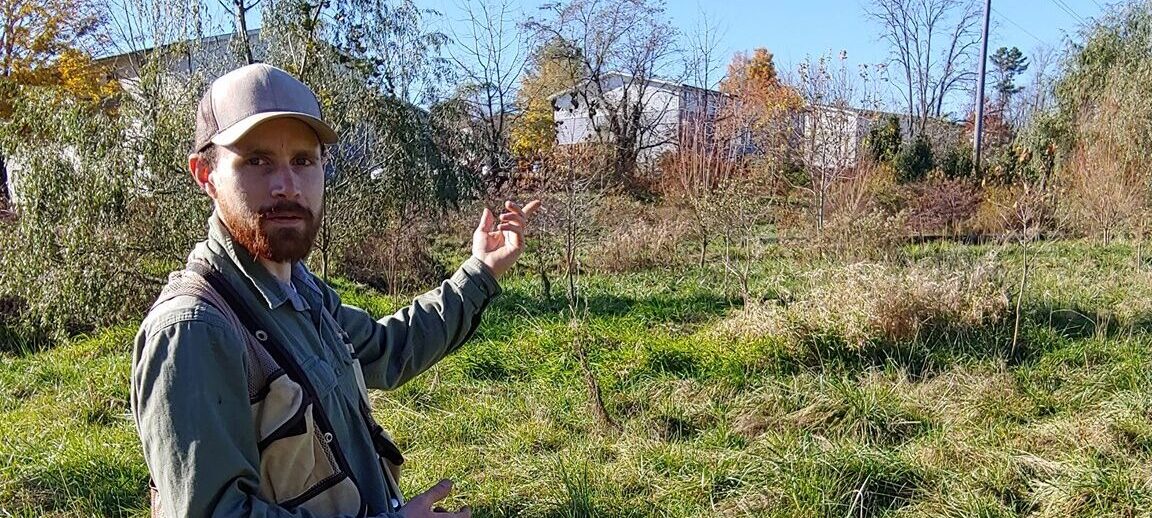“…humans are a part of nature, not separate from it…”
I have never met Tom Saxton in person, only interacted with him via email. However, even in this disjointed meeting, I have discovered that Tom is a bridge-builder. He understands the benefit of a network and how to utilize the talents of each part of a group to the best of their ability. Indeed, Tom will tell you himself the more diverse the group, the stronger. I am reminded of Margaret Meade’s quote “Never doubt that a small group of thoughtful, committed, citizens can change the world. Indeed, it is the only thing that ever has.” With people like Tom Saxton leading charge, we can expect to change the world one tree at a time. ~ Lisa
What was your first interaction with the New River or the watershed? Did you grow up near water? Many in my family went to VT.
Thank you so much for this wonderful honor! As a student at Virginia Tech I spent a lot of time floating and fishing the New between Radford and Bluestone, WV, in addition to many of its tributaries.
I grew up with a lot of water interaction – kayaking, canoeing, rafting rivers! Through those experiences I gained a respect and appreciation for rivers and streams and a calling to work to protect them.
You launched the Stroubles Creek Restoration Initiative (SCRI) before graduating in 2014 with a degree in Natural Resource Conservation. Are the goals the same now as then?
Some background for names – 2014-2015 we called it “Save Stroubles’ , 2016-2018- SCRI, then 2018 to present Stroubles Creek Coalition (SCC). Different names, same group!
Our goals are the same in that the intention of the group was to created a network and community of partners to work together to improve the health and condition of Stroubles Creek and connect humans to our planet in the process.
The Big Plant came 5 years later. How are the two connected?
In 2019 we partnered with the Environmental Coalition at Virginia Tech(VT) to launch The Big Plant at VT and have been involved ever since. We had been doing volunteer tree plantings since 2014, but The Big Plant took our volunteer work to another level of volunteer involvement.
SCRI affects many different disciplines at Virginia Tech – conservation, biological, environmental, urban planning, and a storm drain mural public arts initiative in Blacksburg. The StREAM Lab at Stroubles Creek was also created as an offshoot, correct? What’s next?
Storm Drain mural is separate from our work.
StREAM Lab ,Stream Research, Education and Management was around before SCC and are a part of Biological Systems Engineering. (BSE) VT BSE/ StREAM Lab has been a top partner and member of SCC since the beginning
Your initial goal was to plant 1000 trees by 2020 – 6 years after you began. You’re like Johnny Appleseed’s cousin. Did you ever dream you would be responsible for the planting of over 40,000 trees? What’s the new goal?
In 2014 that goal of 1,000 trees felt like a big task. I never dreamed of the level this project would get to and it’s all been made possible through diverse teamwork and collaboration and many hands chipping in. New River Conservancy joining the efforts has been massive. Today we have over 70,000 native trees and shrubs planted, with many more coming this spring.
Any advice for a student trying to start their own initiative on or off campus?
Change often happens over a long period of time. We can’t expect change to happen at the snap of a finger, it takes work, it takes perseverance. Think of change like planting the seed of a tree – it takes time to establish, to grow, and it’s never easy. But if you are persistent, patient, and collaborative, anything is possible. If the first seed dies, adapt, and keep planting!
The most effective way to change, I have found, is through partnership and collaboration. Through making friends and forming teams, the sky can really become the limit.
If we go about change with a combative approach you can push away potential friends and partners and are far less likely to succeed. The more diversity in partners we create, the stronger the web. Sometimes, what initially might appear as a barrier entity to your mission of change might someday prove to be an integral partner, so always approach people and entities through the lens of collaboration and working together, even if an entity or person might have an opposing view from you – that doesn’t make them the enemy – just listen to them and adapt and find common ground.
How did the New River Conservancy get involved?
I initially connected with NRC through a New River Watershed Roundtable meeting. I first connected with Chelsea then with Cathy. [Cathy Hanks, NRC New River Valley Program Coordinator] It was only a couple months after those first interactions that we were teaming up getting native trees and shrubs in the ground!
I love this quote of yours I found in an interview with The Collegiate Times “Our generation is tasked with solving challenging environmental problems. Our aim should be to think globally, while acting locally, and that is what we are striving for here at Virginia Tech.” How can we do better for the planet?
There’s often a perception that on a planet with a human population so large, a single individual doesn’t have a big impact. But when billions of people collectively think that way, nobody is working to make changes at the personal level – and thus we have lost and given up on the future. However, if we can be the change we want to see in the world and lead through example, anybody can have a large impact. If we consider our daily local actions and their global impacts while also keeping in mind the needs of future generations, we will begin to reconsider habits and actions that can be destructive to our communities and planet. Through working together, anything is possible.
Anything else you would like our readers to know?
Community level efforts of ecological restoration are powerful ways to connect people to our home, our planet. We can even think of helping out on ecological restoration projects as a means of outdoor recreation. A powerful message of the very principle of ecological restoration is that humans are a part of nature, not separate from it, anyone can play a part. Ecological restoration can be done anywhere where ecosystems have been degraded, from urban centers, to rural areas. Our ability to work together in ecological restoration efforts are essential to having a healthy and resilient future for all life. We often find that this work strengthens our social, economic, and ecological systems, creating more resilient communities – for this is the very intent of the work and the mission.
Register to volunteer at The Big Plant
Tom Saxton instructs student at Stroubles Creek in Blacksburg, Va.


